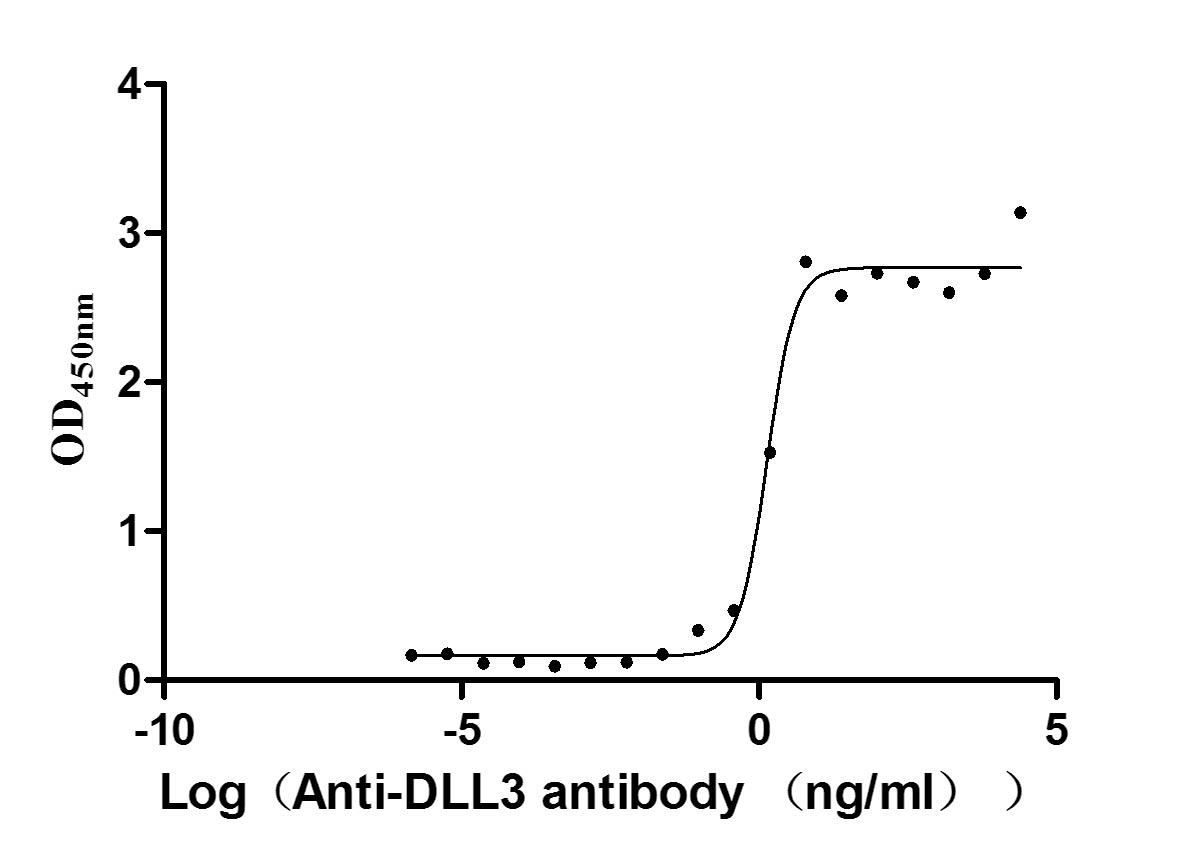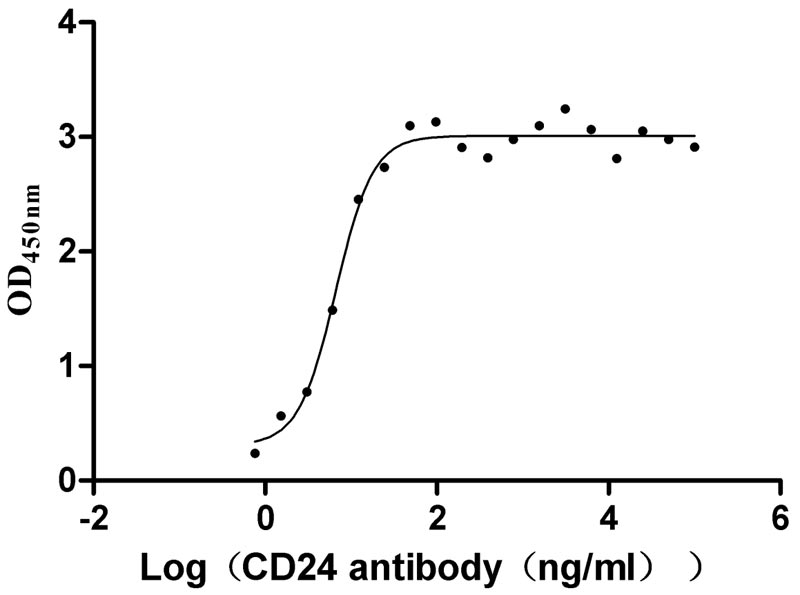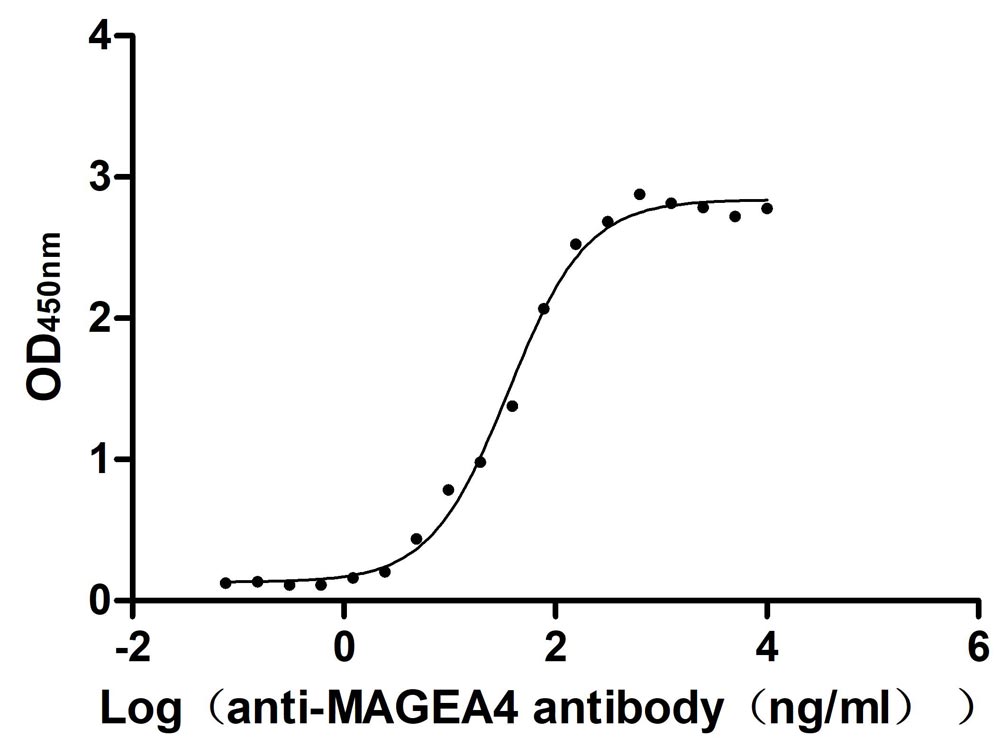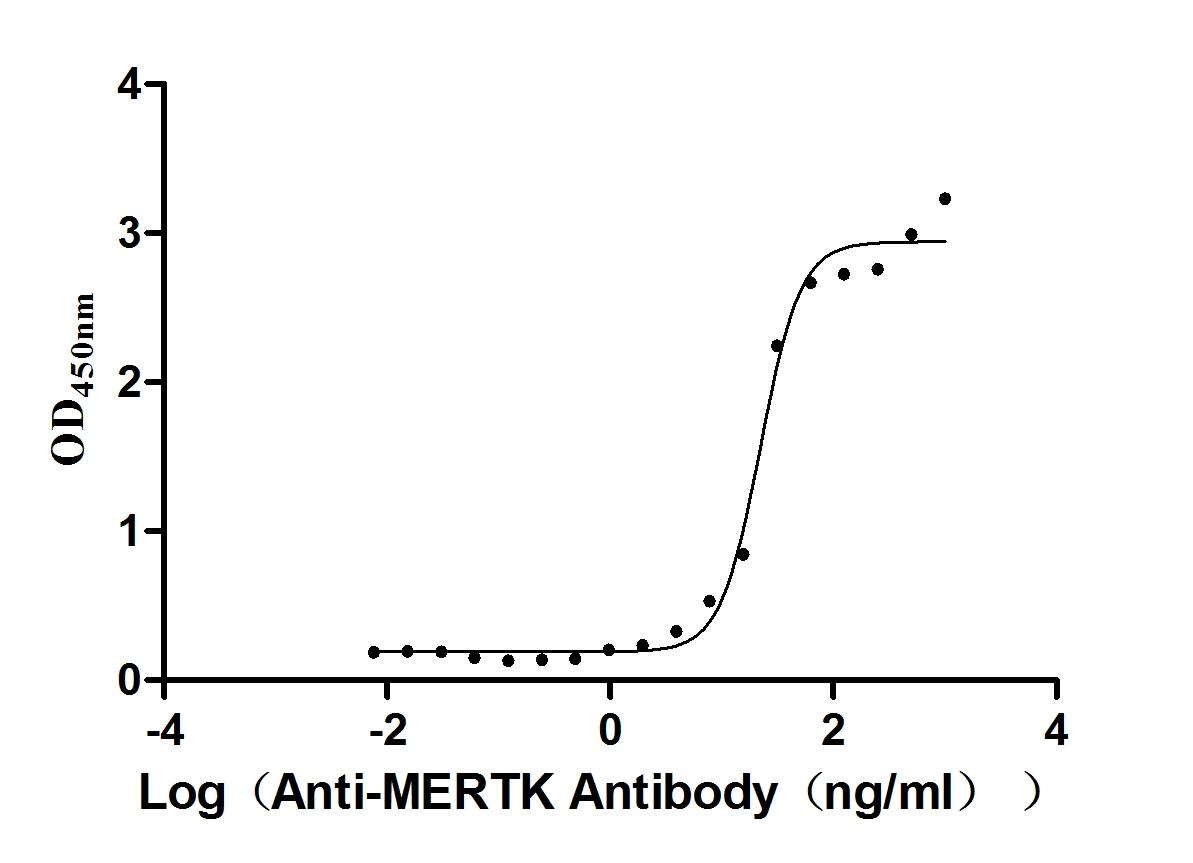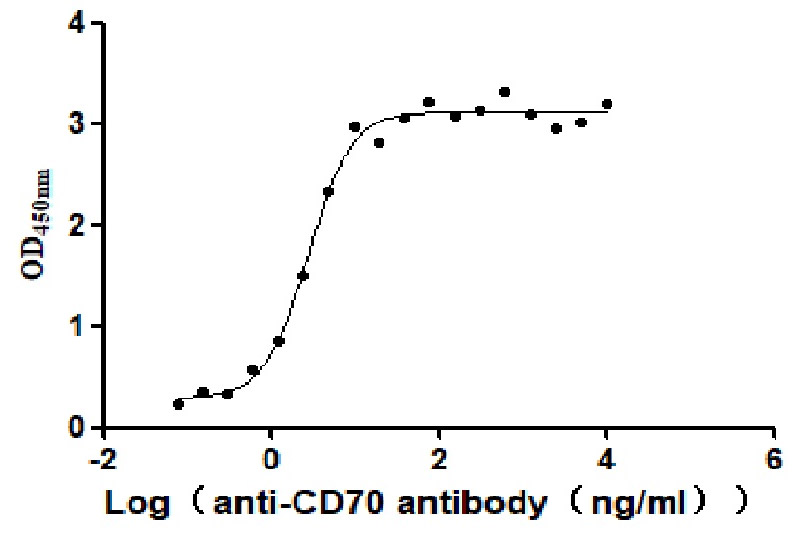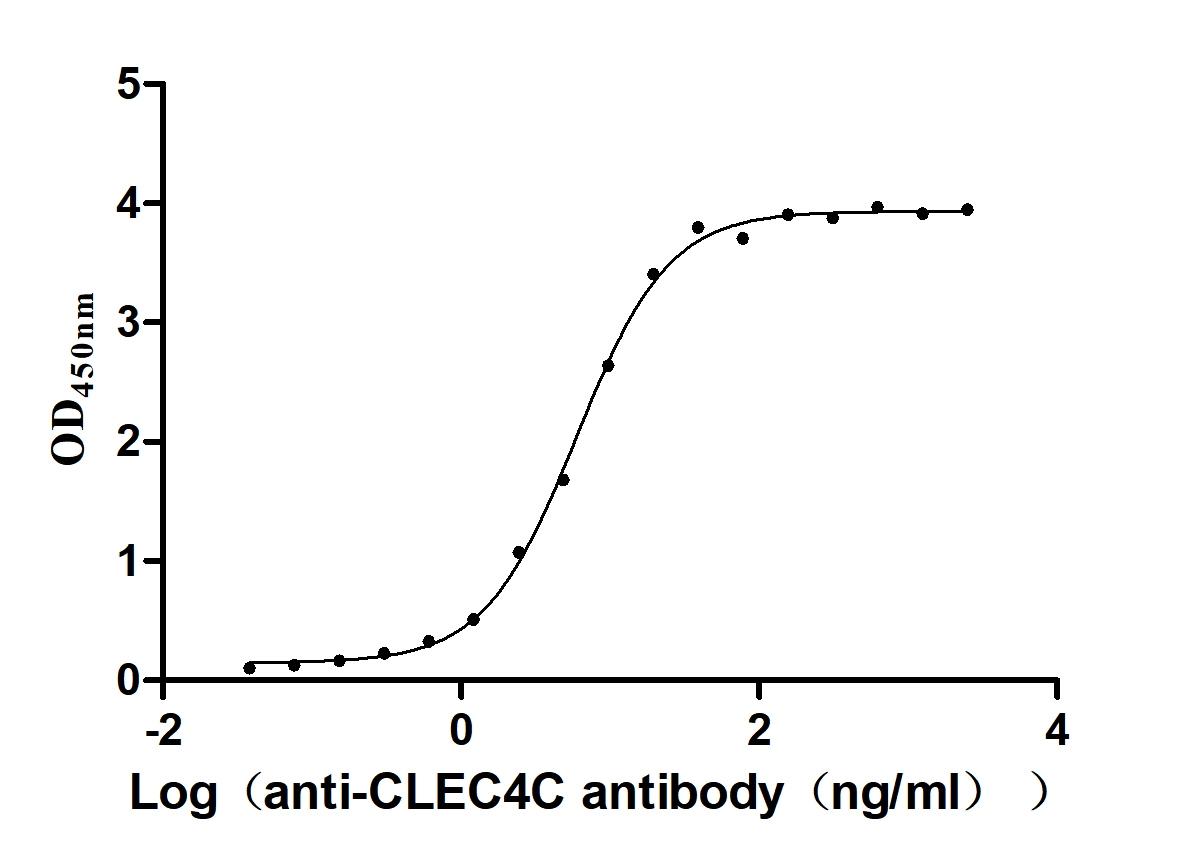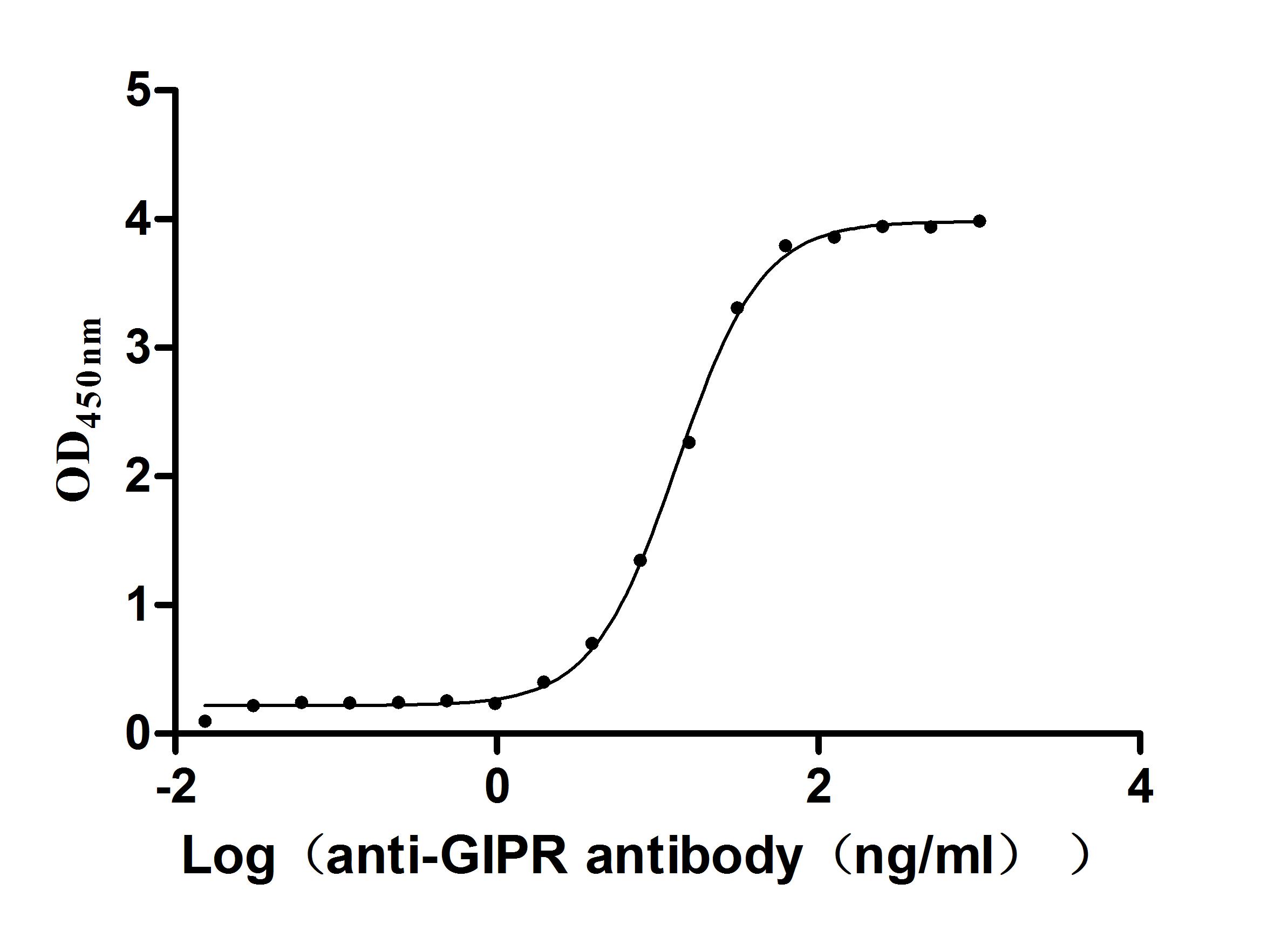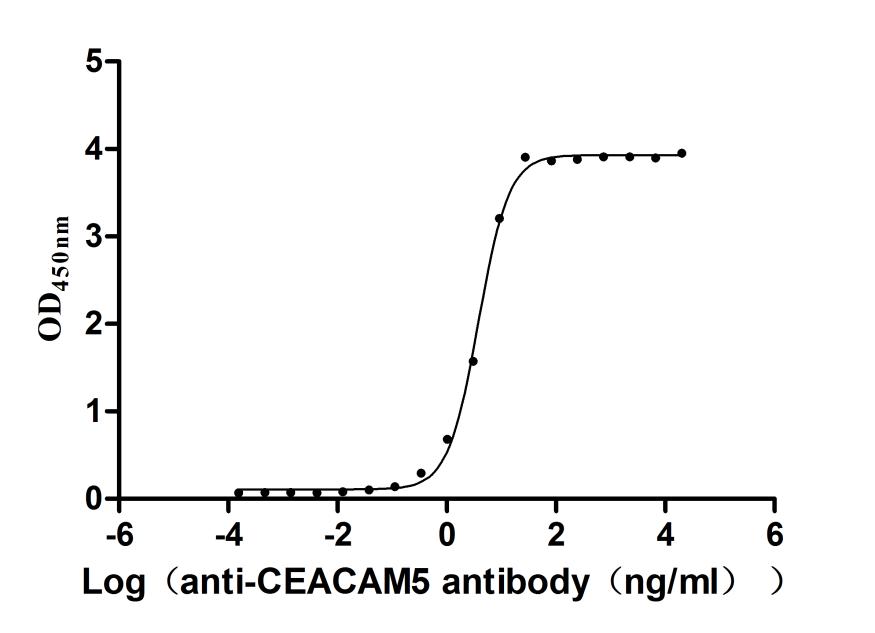Recombinant Mouse Programmed cell death 1 ligand 1 (Cd274), partial
-
中文名稱:Recombinant Mouse Programmed cell death 1 ligand 1(Cd274),partial
-
貨號:CSB-YP880615MO
-
規(guī)格:
-
來源:Yeast
-
其他:
-
中文名稱:Recombinant Mouse Programmed cell death 1 ligand 1(Cd274),partial
-
貨號:CSB-EP880615MO
-
規(guī)格:
-
來源:E.coli
-
其他:
-
中文名稱:Recombinant Mouse Programmed cell death 1 ligand 1(Cd274),partial
-
貨號:CSB-EP880615MO-B
-
規(guī)格:
-
來源:E.coli
-
共軛:Avi-tag Biotinylated
E. coli biotin ligase (BirA) is highly specific in covalently attaching biotin to the 15 amino acid AviTag peptide. This recombinant protein was biotinylated in vivo by AviTag-BirA technology, which method is BriA catalyzes amide linkage between the biotin and the specific lysine of the AviTag.
-
其他:
-
中文名稱:Recombinant Mouse Programmed cell death 1 ligand 1(Cd274),partial
-
貨號:CSB-BP880615MO
-
規(guī)格:
-
來源:Baculovirus
-
其他:
-
中文名稱:Recombinant Mouse Programmed cell death 1 ligand 1(Cd274),partial
-
貨號:CSB-MP880615MO
-
規(guī)格:
-
來源:Mammalian cell
-
其他:
產(chǎn)品詳情
-
純度:>85% (SDS-PAGE)
-
基因名:
-
Uniprot No.:
-
別名:Cd274; B7h1; Pdcd1l1; Pdcd1lg1; Pdl1Programmed cell death 1 ligand 1; PD-L1; PDCD1 ligand 1; Programmed death ligand 1; B7 homolog 1; B7-H1; CD antigen CD274
-
種屬:Mus musculus (Mouse)
-
蛋白長度:Partial
-
蛋白標簽:Tag?type?will?be?determined?during?the?manufacturing?process.
The tag type will be determined during production process. If you have specified tag type, please tell us and we will develop the specified tag preferentially. -
產(chǎn)品提供形式:Lyophilized powder
Note: We will preferentially ship the format that we have in stock, however, if you have any special requirement for the format, please remark your requirement when placing the order, we will prepare according to your demand. -
復溶:We recommend that this vial be briefly centrifuged prior to opening to bring the contents to the bottom. Please reconstitute protein in deionized sterile water to a concentration of 0.1-1.0 mg/mL.We recommend to add 5-50% of glycerol (final concentration) and aliquot for long-term storage at -20℃/-80℃. Our default final concentration of glycerol is 50%. Customers could use it as reference.
-
儲存條件:Store at -20°C/-80°C upon receipt, aliquoting is necessary for mutiple use. Avoid repeated freeze-thaw cycles.
-
保質(zhì)期:The shelf life is related to many factors, storage state, buffer ingredients, storage temperature and the stability of the protein itself.
Generally, the shelf life of liquid form is 6 months at -20°C/-80°C. The shelf life of lyophilized form is 12 months at -20°C/-80°C. -
貨期:Delivery time may differ from different purchasing way or location, please kindly consult your local distributors for specific delivery time.Note: All of our proteins are default shipped with normal blue ice packs, if you request to ship with dry ice, please communicate with us in advance and extra fees will be charged.
-
注意事項:Repeated freezing and thawing is not recommended. Store working aliquots at 4°C for up to one week.
-
Datasheet :Please contact us to get it.
相關(guān)產(chǎn)品
靶點詳情
-
功能:Plays a critical role in induction and maintenance of immune tolerance to self. As a ligand for the inhibitory receptor PDCD1/PD-1, modulates the activation threshold of T-cells and limits T-cell effector response. Through a yet unknown activating receptor, may costimulate T-cell subsets that predominantly produce interleukin-10 (IL10).; The PDCD1-mediated inhibitory pathway is exploited by tumors to attenuate anti-tumor immunity and escape destruction by the immune system, thereby facilitating tumor survival. The interaction with PDCD1/PD-1 inhibits cytotoxic T lymphocytes (CTLs) effector function. The blockage of the PDCD1-mediated pathway results in the reversal of the exhausted T-cell phenotype and the normalization of the anti-tumor response, providing a rationale for cancer immunotherapy.
-
基因功能參考文獻:
- Immunogenic mouse neuroblastoma acquires adaptive immune resistance by up-regulating PD-L1 expression, whereas PD-L1 is of lesser consequence in nonimmunogenic neuroblastoma tumors. Combining PD-L1 checkpoint inhibition with whole tumor cell/anti-CTLA-4 vaccination enhanced tumor cell killing, cured mice with established tumors, and induced long-term immune memory (6 months). PMID: 29377881
- Data show that programmed cell death 1 ligand 1 (PD-L1) from disparate cellular sources, including tumour cells, myeloid or other immune cells can similarly modulate the degree of cytotoxic T-cell function and activity in the tumour microenvironment. PMID: 28220772
- IFNbeta activates neuronal PI3K/Akt signalling and Akt binds to transcription factor FoxA1 that translocates to the nucleus and induces PDL1. Conversely, inhibition of PI3K/Akt, FoxA1 and PDL1 blocked neuronal ability to generate FoxA1(+)Tregs. PMID: 28436428
- suppression of inflammatory responses and T cells apoptosis were observed with elevated expression of IRAK-M and PDL-1, and interference and neutralization of these 2 molecules led to partly reversed suppression of inflammation. PMID: 29995830
- The present work shows the role of SOCS1 in murine melanoma development and the potential of SOCS1-silenced tumor cells in raising an effective anti-melanoma immune response. PMID: 28079159
- miR-142 could attenuate cecal ligation and puncture-induced inflammation and thus sepsis via targeting PD-L1 in macrophages. PMID: 29793310
- T-cell activation mediates the immunopreventive effects of anti-PD-1; PD-1 on T cells interacts with the PD-1 ligand PD-L1 on cancer cells PMID: 29018057
- an enhanced expression of PD-L1 was observed besides an increased production of IFN-gamma by TH2 cells. PMID: 28917991
- Study demonstrated that PD-L1 expression is up-regulated in the salivary glands of female NOD mice during the developmental phase of Sjgren's syndrome, which in turn hinders the development and onset of this disease in a negative feedback fashion. PMID: 27966604
- PD-L1 expression on tumor cells suppressed antigen-driven TNF production by CD8(+) T cells, which could be antagonized through PD-1 blockade PMID: 28665401
- Anti-PD-1/PD-L1 therapy inhibited CMT167 orthotopic lung tumors by 95%. .Silencing PD-L1 expression in CMT167 cells resulted in smaller orthotopic tumors that remained sensitive to anti-PD-L1 therapy, whereas implantation of CMT167 cells into PD-L1(-) mice blocked orthotopic tumor growth, indicating a role for PD-L1 in both the cancer cell and the microenvironment. PMID: 28819064
- In estrogen receptor negative breast cancer cells targeting of IL-17A inhibited PDL1 expression in the tumor microenvironment, decreasing the percentage of Treg cells in tumor-infiltrating lymphocytes, and promoting CD4+ and CD8+ T cells to secrete interferon gamma. PMID: 27935862
- Squamous cell carcinomas escape immune surveillance via inducing chronic activation and exhaustion of CD8+ T Cells co-expressing PD-1 and LAG-3 inhibitory receptors. PMID: 27835902
- Genetic ablation of a single immune-regulatory molecule in this model [i.e., B7-homolog 1 (B7-H1, PD-L1)] not only significantly increased incidence of spontaneous CNS autoimmunity and aggravated disease course, especially in the later stages of disease, but also importantly resulted in encephalitogenic T-cell infiltration and lesion formation in normally unaffected brain regions. PMID: 27671636
- Studied the possible role of PD-L1 on malignant melanoma initiating cells (MMICs). Found blocking of PD-L1 in melanoma cell lines impaired tumorsphere formation and induced the apoptosis. Also, blocking PD-L1 inhibited tumor growth in vivo. PMID: 29250533
- B7-H1 induction in keratinocytes may play a crucial role in the protection from CD4+ T cell-mediated tissue inflammation by exogenous antigens delivered from the mucosal surface in oral cavity PMID: 27731324
- Interferon-related secretome from direct interaction between immune cells and tumor cells is required for upregulation of PD-L1 in tumor cells. PMID: 27295261
- Data (including data from studies in transgenic/knockout mice) suggest that T-cell expression of Mirn155 is required to limit melanoma growth; miR-155, Pdcd1, Pdcd1l1, and Ctla4 appear to regulate overlapping pathways promoting antitumor immunity. [Mirn155 = microRNA 155; Pdcd1 = programmed cell death 1 protein; Pdcd1l1 = programmed cell death 1 ligand 1 protein; Ctla4 = cytotoxic T-lymphocyte-associated protein 4] PMID: 28912267
- spleen-derived IFN-gamma induces generation of PD-L1(+)-suppressive neutrophils. PMID: 28974543
- It was concluded that down-regulated expression of miR-143 and up-regulation of its direct target B7H1 may indicate a novel therapeutic method for radiation-induced thymic lymphoma by increased expression of miR-143 or inhibition of B7H1. PMID: 28736328
- HDAC6 inhibition reduces tumor growth and PD-L1 production in vivo. PMID: 26775640
- mediates an innate checkpoint to control adaptive T helper responses PMID: 28747424
- PD-L1 selectively enhances T cell-mediated immune responses, driving graft-versus-host disease lethality and suggesting a context-dependent function of the PD-1/PD-L1 axis PMID: 27294527
- Mesenteric lymph node CD11b(-) CD103(+) PD-L1(High) dendritic cell subset probably takes up luminal antigens in the intestine, migrates to MLNs, and highly induces regulatory T cells through TGF-beta activation. PMID: 28423181
- These results indicate that the outcome of PD-L1-mediated signaling in CD8+ T cells depends on the presence or absence of CD4+ T cells, the nature of the interacting receptor expressed by CD8+ T cells, and the tissue environment in which the signaling occurs. PMID: 28414296
- findings identify a previously unrecognized role of PD-L1 as an endogenous pain inhibitor and a neuromodulator. PMID: 28530662
- reduced cytotoxicity as a key mechanism by which tumor PD-L1 suppresses antitumor immunity and demonstrate that tumor PD-L1 is not just a marker of suppressed antitumor immunity. PMID: 28302645
- Apigenin inhibits IFN-gamma-induced PD-L1 expression by breast cancer cells, potentially rendering BC cells that lack constitutive PD-L1 expression more susceptible to T cellmediated anti-tumor immune responses. PMID: 27378243
- results reveal a novel CD40-dependent regulation of PD-L1 trafficking induced upon TLR3 signaling that dictates its inhibitory activity. PMID: 27911948
- IL-6 and PD-L1 blockade combination inhibits hepatocellular carcinoma cancer development in a mouse model. PMID: 28254435
- PD-1/PD-L1 plays a crucial role in maintaining immune tolerance induced by UVB-iDCs, as well as in actively controlling effector T cells specific to alloantigens. PMID: 27556047
- Data show that Qiyusanlong decoction (QYSL) can moderately inhibit the growth of the transplanted tumor by decreasing programmed death 1 and programmed death ligand 1 (PD-1/PD-L1) level. PMID: 27371844
- Expression of PD-L1 is correlated with the severity of periodontitis in the mouse model of experimental periodontitis. PMID: 26847035
- Loss of Cdk5 results in persistent expression of the PD-L1 transcriptional repressors, the interferon regulatory factors IRF2 and IRF2BP2, which likely leads to reduced PD-L1 expression on tumors. PMID: 27463676
- addition to inhibiting T cells, hepatic stellate cells (HSCs) concurrently inhibit B cells via PD-L1; this direct B cell-inhibitory activity of HSCs should contribute to the mechanism by which HSCs maintain the liver's immune homeostasis PMID: 26755818
- The results demonstrated that blockade of PD-1/B7H1 pathway could promote mouse NK cells to kill the GL261GSCs, and the PD-1-inhibited NK cells could be a feasible immune therapeutic approach against Glioblastoma multiforme. PMID: 26266810
- These findings provide evidence for a novel immune escape mechanism during acute retroviral infection based on PD-L1 expression levels on virus infected target cells PMID: 26484769
- These results suggest a novel and specific role for PspA in modulating immune responses against S. pneumoniae by regulating PD-L1 expression. PMID: 26214513
- Upregulation of PD-1 and PD-L1 was associated with marked increases in GADD153 during myocardial ischemic reperfusion injury. PMID: 25902191
- Breg cells can suppress through the PD-1/PD-L1 pathway in limiting the differentiation and function of TFH cells PMID: 25609381
- Programmed death 1/programmed death ligand 1 pathway likely plays a crucial role in the mechanisms underlying spontaneous tolerization of B cells responding to ABO-blood group antigens in liver transplantation. PMID: 26247556
- B7-H1 Selectively Controls TH17 Differentiation and Central Nervous System Autoimmunity via a Novel Non-PD-1-Mediated Pathway. PMID: 26378076
- the upregulation of IFN-beta in DCs induces the up-regulation of coinhibitory molecules B7H1 and GITRL, which cause an impaired activation of naive Ag-specific T cells PMID: 25144375
- IL-10 released from 18-month old mice stimulated the expression of B7-H1 on myeloid-derived suppressor cells PMID: 25479230
- PD-L1 expression is increased on tumor cells by direct contact with BM-derived CD11b-positive cells through the p38 signaling pathway. PMID: 25889536
- Our study defines PD-1 upregulated on Treg cells and its interaction with PD-1 ligand on effector T cells as one cause for the potent T cell suppression and proposes the role of PD-1 on Treg cells. PMID: 25934860
- Transduction of T cells with this new PD-1-CD28 receptor has the potential of breaking the PD-1-PD-L1-immunosuppressive axis in ACT. PMID: 26105028
- data reveal that PD-L1 is a critical modulator of Tregs' ability to suppress iALI, and this appears to involve SHP-1 activation. PMID: 25057927
- In experimental autoimmune uveitis, inducible Tregs use a PD-1/PD-L1 mechanism to suppress the disease. PMID: 25877928
- Immunological in vivo effects of B7-H1 deficiency PMID: 25173046
顯示更多
收起更多
-
亞細胞定位:Cell membrane; Single-pass type I membrane protein. Early endosome membrane; Single-pass type I membrane protein. Recycling endosome membrane; Single-pass type I membrane protein.
-
蛋白家族:Immunoglobulin superfamily, BTN/MOG family
-
組織特異性:Highly expressed in the heart, thymus, skeletal muscle, and lung. Weakly expressed in the kidney, spleen, thyroid, and liver. Expressed on activated dendritic cells, B-cells and macrophages. Expressed in numerous tumor cells lines of lymphoid origin.
-
數(shù)據(jù)庫鏈接:
Most popular with customers
-
Recombinant Human Delta-like protein 3 (DLL3), partial (Active)
Express system: Mammalian cell
Species: Homo sapiens (Human)
-
Recombinant Human Signal transducer CD24 (CD24)-Nanoparticle (Active)
Express system: Mammalian cell
Species: Homo sapiens (Human)
-
Recombinant Human Melanoma-associated antigen 4 (MAGEA4) (Active)
Express system: Mammalian cell
Species: Homo sapiens (Human)
-
Recombinant Mouse Tyrosine-protein kinase Mer (Mertk), partial (Active)
Express system: Mammalian cell
Species: Mus musculus (Mouse)
-
Recombinant Human CD70 antigen (CD70), partial (Active)
Express system: Mammalian cell
Species: Homo sapiens (Human)
-
Recombinant Macaca fascicularis C-type lectin domain family 4 member C(CLEC4C), partial (Active)
Express system: Mammalian cell
Species: Macaca fascicularis (Crab-eating macaque) (Cynomolgus monkey)
-
Recombinant Macaca fascicularis Gastric inhibitory polypeptide receptor (GIPR), partial (Active)
Express system: yeast
Species: Macaca fascicularis (Crab-eating macaque) (Cynomolgus monkey)
-
Express system: Mammalian cell
Species: Macaca mulatta (Rhesus macaque)


